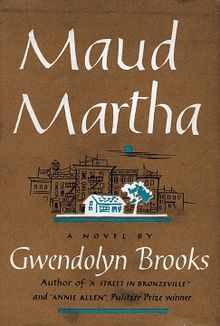
by Michael Loveday
The connected but piecemeal novella-in-flash offers a dual opportunity and challenge like no other in fiction: to paint in miniature and to paint on a grand canvas. As a series of individual flash fiction moments adding up to an expansive whole, presented with spaces and pauses in between, it can deliver the satisfying, extended narratives of long-form fiction within a frame of only a few thousand words.
However, not all novellas-in-flash make use of flash fiction in the same way. We can broaden our understanding of the novella-in-flash by thinking about it as a family of sub-categories. Here are some different archetypes that I’ve identified over time:
- The ‘Classic-Form’ Novella-in-Flash
- The Novella-in-Fragments
- The Novella-in-Prose-Poems
- The ‘Polyphonic’ Novella-in-Flash
- The Novella-as-Collection
Readers should understand the following category descriptions as signposts for different options and strategies, rather than fixed ‘rules’. Labels help us to identify patterns, variations and broad tendencies. In this way, we can expand the novella-in-flash’s potential.
The ‘Classic-Form’ Novella-in-Flash
The core DNA of the ‘classic-form’ novella-in-flash is to arrange a sequence of individual flash fictions so they suggest a bigger story. It is often richly character-driven rather than relentlessly plot-driven, exploring one protagonist’s life or a small, connected ensemble cast, and showing them speaking, moving and interacting in tangible settings.
Each chapter may have a lyrical impulse (as flash fiction often does), but the primary aim of this kind of sequence is to portray characters within the context of a meaningful, overarching narrative. Events unfold in time, and there is some progression before reaching the novella’s ending.
Classic examples of this kind of novella-in-flash include Gwendolyn Brooks’ Maud Martha (1953), Evan S. Connell’s Mrs Bridge (1959) and Mr Bridge (1969), Sandra Cisneros’s The House on Mango Street (1984), or more recently Charmaine Wilkerson’s How to Make a Window Snake (2017), Gillian Walker’s The World at the End of the Garden (2020), and David Swann’s Season of Bright Sorrow (forthcoming in 2021).
How to Spot a ‘Classic-Form’ Novella-in-Flash at 100 Yards
Anyone who has read a few novellas-in-flash will be aware of books and pamphlets that proudly resist these classic principles. However, these general patterns build up a picture of the animal in question. The more that these elements appear in a work of fiction, the more likely it will feel like a novella-in-flash/novel-in-flash in the classic mode.
Here are eight features of what might be called a ‘classic-form’ novella-in-flash/novel-in-flash:
- Titles – With some notable exceptions, each chapter has a title rather than simply a chapter number, establishing its own distinct identity as a story.
- Feels like Flash – Each chapter is under 1,000 words and tends to feel like flash fiction. Individual chapters may be full-fledged short-short stories with a clear narrative arc or they may sometimes feel closer to a sketch or vignette, or even resemble a prose poem. Across a full ‘classic-form’ novella-in-flash, there is some room for variation. Nevertheless, the style is focused or compressed rather than sprawling and discursive. It also tends towards the lyrical, inventive, or striking, making use of flash fiction’s typical strategies. Exposition (digressions, explanations, or backstory supplying context for a story and its characters – essential Polyfilla when building a novel), may well be pared right down. Each flash fiction chapter is polished by the writer as its own little jewel.
- Blank space – The shortness of chapters (and the fact that each chapter most likely begins on a new page) means that compared to traditional fiction there is a significant amount of blank space visible in the overall manuscript. There is a stop-start atmosphere of recurring silences. This lack of continuity is a key part of the novella-in-flash’s music. In those gaps, the reader does the interpretative work to join up the dots of the story situation and fill in unspoken meanings. What is left out still matters. Where the novel may rely on exposition, the novella-in-flash uses these readerly gaps, and the work that the reader does in them, as part of the glue of its construction.
- Self-Contained Qualities – Each flash fiction chapter tends to be a world of its own – it is likely to begin afresh in time, location, or situation, only rarely referring back to what has just preceded in the previous flash. Most new chapters, if not all, leap to some new moment within the broader story situation. We could enjoy the majority of them in isolation and find them meaningful, without needing the scaffolding of other flash fictions there.
- Resonant Endings – A common effect of flash fiction is that each ending will resonate like a ringing bell or sustained piano key, inviting us to reflect and reconsider before we turn the page. Such endings hold us in suspension, trusting in a character insight, an image, the senses, or concrete detail. In the ‘classic-form’ novella-in-flash this means there is often a pregnant pause or small experience of closure, a turning inward without explicitly setting up what will follow in the next chapter. And the presence of many short chapters within a novella-in-flash means that the reader experiences disproportionately many more small moments of meaningful suspension or closure, within fewer pages, than in a novel or traditional novella.
- Narrative Thread and Development – A single, overarching story can be glimpsed across the whole work, a developing situation that accumulates from individual moments. There is usually at least one recurring character, or perhaps a small ensemble cast. It is something more than a collection of disparate, miscellaneous material: a unifying thread is suggested, a process of tapestry and linkage for the reader. And by the end of the book or pamphlet, there has been some kind of story shift – some meaningful change has occurred.
- Sequencing Matters – Unlike with a miscellaneous flash fiction collection, the order of individual stories in a ‘classic-form’ novella-in-flash absolutely matters. The author has arranged them so that they incrementally construct an overall picture and narrative situation for the reader. While some chapters might be more free-floating and could potentially appear in a different order, if you read all the chapters in a completely random order, we might miss important details as the narrative develops, or plot revelations might be stumbled across too soon.
- A Rich Kaleidoscope – Events are often explored as self-contained moments, things worth attending to for their own illuminated, gorgeous sake. Chapters trust in the cumulative effect of the whole to create momentum. As it proceeds, therefore, the ‘classic-form’ novella-in-flash often explores interesting side alleys. Readers experience the character situation via a kaleidoscope of different angles, and each flash serves up something of interest, beyond serving a purely functional plot purpose. It is not a single-minded, relentless page-turner hastening in a narrow way towards an ending, but instead creates rich juxtapositions through a kind of montage. The ‘classic-form’ novella-in-flash therefore “contain[s] multitudes”, as Whitman might have put it. It shows the “drunkenness of things being various” (Louis MacNeice).
As mentioned, many books and pamphlets resist these classic principles even though they are considered novellas-in-flash/novels-in-flash.
In what follows next time, we will consider other manifestations of the novella-in-flash form…
____________________________
 Michael Loveday is an editor, mentor, and tutor in Adult and Higher Education. He was judge of the 2019 and 2020 Novella-in-Flash Awards at Bath Flash Fiction. He teaches an online course in writing a novella-in-flash: https://novella-in-flash.com/
Michael Loveday is an editor, mentor, and tutor in Adult and Higher Education. He was judge of the 2019 and 2020 Novella-in-Flash Awards at Bath Flash Fiction. He teaches an online course in writing a novella-in-flash: https://novella-in-flash.com/
This article is an extract from his craft guide Unlocking the Novella-in-Flash: from Idea to Manuscript, forthcoming from Ad Hoc Fiction in spring 2022: https://adhocfiction.com/
Grateful acknowledgement to Meg Pokrass, Michelle Elvy, Dave Swann and Anne Caldwell for advice in the development of this essay. This essay was supported using public funding by the National Lottery through Arts Council England.


 The core workshop of SmokeLong Fitness is all in writing, so you can take part from anywhere at anytime. We are excited about creating a supportive, consistent and structured environment for flash writers to work on their craft in a community. We are thrilled and proud to say that our workshop participants have won, placed, or been listed in every major flash competition. Community works.
The core workshop of SmokeLong Fitness is all in writing, so you can take part from anywhere at anytime. We are excited about creating a supportive, consistent and structured environment for flash writers to work on their craft in a community. We are thrilled and proud to say that our workshop participants have won, placed, or been listed in every major flash competition. Community works.